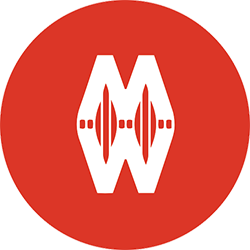Paper
Thursday, April 04, 2019: 11:00am - 12:30pm - Independence East West: Papers: What is the Visitor Journey?
Maarten Brinkerink, Netherlands Institute for Sound and Vision, The Netherlands, Karen Drost, Netherlands Institute for Sound and Vision, The Netherlands
Published paper: Labs as an Agile Instrument to Supercharge the Development of a Tech Heavy Museum: Making informed choices by failing early and learning by doing
This paper describes how the Netherlands Institute for Sound and Vision uses labs as a structured but flexible instrument to experiment with different solutions that are required for the realisation of a new visitor experience at an early stage. They allow us to assess the functional performance, user experience and practicalities involved with implementing different technological solutions for the many challenges involved with our ambitious vision for the new museum. The labs are partly conducted ‘in the wild’ on the museum floor, with test subjects representing the new prospective museum visitor. In the coming years these labs will allow us to fail early, make informed choices, and build internal knowledge on key aspects of our new museum experience and the mechanisms required to realise our vision.
The Media Experience at the Netherlands Institute for Sound and Vision in Hilversum celebrated its 11th birthday in December 2017. Although this personalized visitor experience, filled with interactive exhibitions, still proves to be an example for a lot of colleague institutions, we are now on the cusp of a large scale transformation into an Institute for Media Culture. This transformation comes with significant technological challenges to bring the vision for this museum to reality. In reaction to a sea change in the global media landscape, the storyline for the new museum is based on the notion that everyone fulfils a significant role in the world of media.
This paper will describe the topics we identified for potential labs related to our new museum concept and the rationale behind them. It will also describe how we’ve structured the labs as an agile instrument to inform the development process and how they are implemented in the larger structure of the programme that delivers the new museum. All of this will be illustrated with the first two labs we’ve run, on facial recognition and personal data profiling respectively.
Bibliography:
"The Agile museum." MW2016: Museums and the Web 2016. Published January 15, 2016. Consulted September 30, 2018. https://mw2016.museumsandtheweb.com/paper/the-agile-museum/
C. Ross, and M. Terras, Visitors, Digital Innovation and a Squander Bug: Reflections on Digital R&D for Audience Engagement and Institutional Impact. In Museums and the Web 2013, N. Proctor & R. Cherry (eds). Silver Spring, MD: Museums and the Web. Published January 31, 2013. Consulted September 30, 2018. https://mw2013.museumsandtheweb.com/paper/visitors-digital-innovation-and-a-squander-bug-reflections-on-digital-rd-for-audience-engagement-and-institutional-impact/
"The Museum Innovation Model: A museum perspective on innovation." MW2016: Museums and the Web 2016. Published January 14, 2016. Consulted September 30, 2018. https://mw2016.museumsandtheweb.com/paper/the-museum-innovation-model-a-museum-perspective-to-innovation/
“Open Innovation and Open Source: A Guide for Content Developers.” MW2012: Museums and the Web 2012. Published March 25, 2012. Consulted September 30, 2018. https://www.museumsandtheweb.com/mw2012/papers/open_innovation_and_open_source_a_guide_for_co.html
“What Are Museums Doing to Engage Millennials?” The Iris. Published November 16, 2016. Consulted September 30, 2018. http://blogs.getty.edu/iris/what-are-museums-doing-to-engage-millennials/

